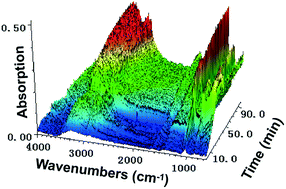Photoinduced defect engineering: enhanced photocatalytic performance of 3D BiOCl nanoclusters with abundant oxygen vacancies†
Abstract
Oxygen vacancies are highly important for photocatalytic performance in bismuth oxychloride, but their preparation is limited to vacuum roasting and hydrogen annealing techniques at high temperatures (200–400 °C). Here we report a straightforward polyvinyl pyrrolidone (PVP)-mediated pathway for the synthesis of BiOCl nanoclusters (BiOCl-NCs) at room temperature, which can spontaneously and rapidly convert surface hydroxyl groups into oxygen vacancies during the photoactivation process. In situ FT-IR results present the formation process of oxygen vacancies and theoretical calculation results demonstrate that after the introduction of oxygen vacancies, a fresh electron donor level formed in the band gap of BiOCl, which is beneficial for visible-light photon energy absorption. As expected, the resulting BiOCl-NCs–OV exhibited remarkable photocatalytic capacity for degradation of organic dyes, reduction of toxic metal ions under all pH conditions and enhanced photocatalytic hydrogen evolution rate (1.21 mmol g−1 h−1) because of in situ generated oxygen vacancies, enhanced light absorption capability, and improved separation and transfer effectiveness of photoexcited charge carriers. Our protocol may open up new ways to design progressive photocatalysts for environment-related applications.

- This article is part of the themed collection: Nanomaterials


 Please wait while we load your content...
Please wait while we load your content...